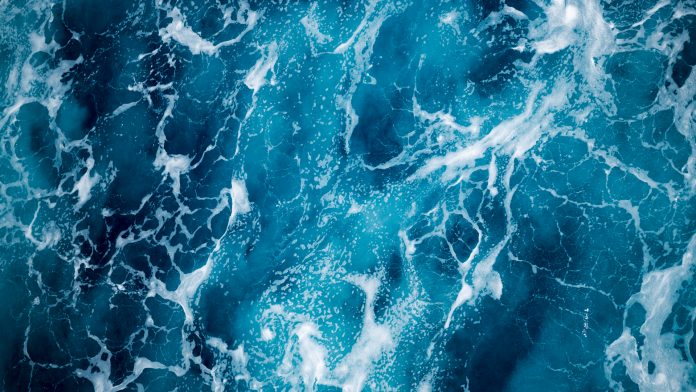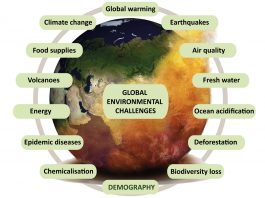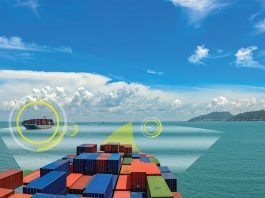The Innovation Platform speaks to The Ocean Foundation President Mark Spalding about why we need to protect our oceans.
The Ocean Foundation (TOF) responds to the growing needs and urgent issues relating to ocean conservation, as well as strengthens the knowledge and expertise of the ocean community as a whole.
What needs to be done in order to undo/reverse the worldwide destruction of ocean environments?
Simply stated, we take too much good stuff out of the ocean and we put too much bad stuff in. And, all we have to do now is stop. A fairly common list of human threats to the ocean include climate change and ocean acidification (both from carbon emissions), overfishing and unregulated fishing, excessive nutrient loading, chemical runoff, depletion of ocean resources, coastal over-development, seismic and acoustic pollution, as well as plastics and marine debris.
The world’s coasts and ocean are a valuable and delicate part of our natural capital, but the “take it all now, forget about the future” business-as-usual model of the current economy is threatening not only marine ecosystems and coastal communities, but the functions of our planet on which all life depends. The ocean is not too big to fix, and we cannot afford to let it fail. The planet will be here even if the ocean is hot, breathless, and acidic. However, such a place will not be our blue planet.
Abundance and biomass should be the focus of revitalisation efforts in order to keep up with population growth and to support the economy as well. This is not about choosing conservation protections versus the economy. Conservation, protection, enforcement, and preservation are good, they work, and they support economic activity. Despite this however, we cannot just maintain where we are in the face of increasing demands with rapidly changing conditions. We cannot call it conservation if we continue to allow nutrients and other pollutants to flow unchecked into waterways. Abundance has to be our goal for food security and healthy ecosystems. This will allow us to get ahead of population growth and the ever-increasing demands on all resources. Our priority has to change from “hold the line” to “restore abundance” and should engage all interested parties who want to work for a healthy and profitable future.
What is the work and role of TOF?
We are at a critical point in time for the future of life on earth, and we must protect the ocean because it is our life support system and it is in danger. Therefore, our mission is to support, strengthen, and promote those organisations dedicated to reversing the trend of destruction of ocean environments around the world. We directly manage and promote conservation work in the following areas: conserving marine habitats and special places, protecting species of concern, building the capacity of the marine conservation community, and expanding ocean literacy and public awareness.
TOF is a California registered, IRC §501(c)(3) not-for-profit international community foundation. TOF operates using a well-established business model(the community foundation)to serve its donors and partners in the marine community. As the only community foundation dedicated to the ocean, we provide philanthropic advice for all donors who care about the health of our ocean and coasts. Our vision is to be an organisation that:
- Steers human interaction with the coasts and ocean toward a sustainable future by building a strong, vibrant, and well-connected community of donors, grantees, and projects that effectively responds to urgent issues and seizes on key opportunities for global marine conservation;
- Provides leadership to the ocean conservation community – working together, developing a better understanding of potential solutions to the threats facing the marine environment, along with stronger capacity and effectiveness to implement those solutions on the ground and in the water; and
- Promotes the use of diverse tools to protect and restore ocean habitats worldwide.
Our three lines of business can be labeled as “building community by playing host,” and therefore we serve donors (expert management of a portfolio of grants and grantmaking), generate new ideas (develop and share content on emerging threats, potential solutions, or better strategies for implementation), and nurture implementors (help them be as effective as they can be).
Can you tell us about the project ‘international ocean acidification initiative’? What does this involve and why is it important?
Ocean acidification (OA) (the unprecedented decrease in the ocean’s pH resulting from increasing carbon in the atmosphere) represents an underappreciated yet existential threat to ecosystems, communities, and economies worldwide. To ensure resilience in the face of this threat, unprecedented action is needed. Building the global capacity to monitor, understand, and respond to changing ocean chemistry is critical to mitigating and adapting to the effects of OA.
TOF’s International Ocean Acidification Initiative was launched in 2003 to help vulnerable human communities monitor changes in ocean chemistry, understand the risks to their social and economic health, and respond to the effects with good policy based on good science.
We are building capacity through the training of scientists in ocean acidification monitoring techniques through regional training workshops. Scientists who receive training become eligible to receive all equipment and materials needed to collect high-quality ocean chemistry data. Specifically, they will receive a TOF developed GOA-ON (Global Ocean Acidification Observing Network) in a Box kit, an affordable and accessible suite of equipment designed for labs in low-resource and/or remote environments. We also foster increased international collaboration and research through support for the Pier-2-Peer mentorship program, regional convening calls, and internships for junior-level scientists. In parallel to this science effort, we foster increased global policy and mitigation efforts through international and domestic stakeholder engagement, communication to policymakers, and support for drafting legislation.
As a snapshot of our accomplishments, we have completed in the last three years:
- Eight regional scientific trainings for more than 150 scientists in Africa, the Pacific Islands, Latin America, and the Caribbean;
- 35 collaborative research and travel grants to scientists in lesser developed nations;
- Two regional policy trainings and one national training for more than 50 policymakers;
- A comprehensive guidebook on ocean acidification for legislators;
- A new kit of equipment that reduced the cost of monitoring by 90%;
- Deployed 17 monitoring kits to 16 countries, establishing monitoring where it didn’t exist before and filling critical knowledge gaps;
- Developing the first ever low-cost seafood adaptation kit;
- Two regional resolutions through the UN Environment and IOCARIBE; and
- MOU’s with two national government agencies to assist in the designs of national policy and science programs.
What are the four major approaches to aquaculture seen today, and how can this be conducted in a more sustainable manner (such as by using closed-systems technologies)?
Aquaculture has supported worldwide food security for millennia, and it already provides more fish protein than wild caught. Deliberate production of marine creatures and plants for food, medical, energy, and other human uses is expanding rapidly – both in technological advances and in scale. Global population growth demands distributed, easily grown, low-impact food security solutions. However, aquaculture is not growing fast enough to keep up with population growth, the sector’s current growth rate is 6%, and it needs to be 10%. A distinction must be drawn between aquaculture for food security and aquaculture to meet consumer choice (e.g. salmon, trout, and shrimp). The good news for food security and environmental sustainability is that about half of the global production of animals (such as shellfish and carp) and plants (e.g. seaweeds and microalgae) came from non-fed species (for instance, species that obtain their nutrients from the sea itself).
There are four major approaches to aquaculture seen today: near shore open pens, experimental offshore open pens, land-based “closed” systems, and “ancient” open systems. The near shore aquaculture systems have most often been used to raise shellfish, salmon, and other carnivorous finfish and, except for shellfish mariculture, are typically seen as the least sustainable and the most environmentally detrimental type of aquaculture. The inherent “open to the ecosystem” design of these systems makes it extremely hard to address the problems of fecal waste, interactions with predators, introduction of non-native/exotic species, excess inputs (food, antibiotics), habitat destruction, and disease transfer. In addition, coastal waters cannot sustain the current practice of moving on down the shoreline following disabling disease outbreaks within the pens. The newer experimental offshore pen aquaculture systems just move these same negative effects out of sight and also add other impacts on the environment, including the larger carbon footprint to manage facilities that are further offshore. If we grow mollusks near shore or dramatically limit near shore open pens in scale and focus on raising herbivores, there is some improvement on the sustainability of the aquaculture system. In our view, it is worth exploring these limited alternatives.
Land based “closed” systems, commonly referred to as recirculating aquaculture systems (RAS), are receiving more and more attention as a viable long-term sustainable solution to aquaculture, both in the developed and developing world. Small, inexpensive closed systems are being modeled to be used in developing countries while larger, more commercially viable, and expensive options are being created in more developed countries. These systems are self-contained and often allow for effective polyculture approaches to raising animals and vegetables together. They are considered sustainable particularly when they are powered by renewable energy, ensure nearly 100% reclamation of their water, and are focused on raising omnivores and herbivores.
The final types of aquaculture, still seen today, are the “ancient” open systems, which are typically seen in two forms. The first is the ebb and flow semi-open aquaculture systems found in places like Hawaii. The second is the raceway or flood plain systems most often seen in Asia, in countries such as China where land areas are flooded (often natural flood plains) to grow various types of crops and fish together. When done appropriately this can be a very sustainable approach to aquaculture, as long as there is sufficient land, water, compatible crops, and the systems are managed to limit negative outputs, such as excess nutrients.
To evaluate the various types of aquaculture, there are a number of certification schemes out there to attest to efforts toward sustainable aquaculture. Some common elements to consider for sustainable aquaculture from these schemes include environmental protection, human welfare, social justice, economic viability, physical longevity, public education, and scientific advancement. We are using these to ask questions about fish feed and fish oil from the wild, destruction of habitat, water pollution, chemicals and drugs, escapes from pens (and the risk of taking over habitats of, or interbreeding with wild species), and energy use. As we ask such questions and think about the elements of sustainability, we see potential in new technologies such as Recirculating Aquaculture Systems, aquaponics, algae biofuels, and integrated multi-trophic polyculture aquaculture. This can include looking at fish food that helps producers improve fishmeal ratios (more efficient food) and can include higher grain content (to reduce pressure on wild stocks). And, a focus on herbivores to take pressure off the use of wild animals and provide a healthier product.
At TOF we are focusing on aquaculture that helps address poverty alleviation, food security, community resilience to disasters, and economic empowerment in the developing world (including empowerment of women and girls).
What are some tools and strategies that can be implemented for effective fisheries management?
We reached “peak fish” 20 years ago. Wild catch quantity numbers are flat, if not in decline. We have taken out of the ocean more than it could supply. As a result, fish populations are in trouble. We are taking too many out for them to maintain population, much less restore their abundance. Many of the ones we are taking out represent either the biggest fish (and therefore most fertile) or the smallest prey fish that take out the bottom of the food chain (and the key to our future). High seas fisheries would be uneconomical without national subsidies for long-distance fleets, and/or the use of slave labour, and some fisheries supply luxury products, thus do not contribute to global food security. The ways in which we capture, process, and transport fish are destructive from the ocean floor to the high tide line. It is no surprise that the ocean’s life systems are thrown out of balance as a result.
Our societies need to improve governance and enforcement. This should focus on putting an end to overfishing, an end to destructive practices (e.g. bottom trawling), eliminating indiscriminate gear, and the abandonment of gear at sea that becomes ghost gear killing without benefit. Adding sanctuaries and improving sanctuary plans to protect sea life, including targeted creation of domestic marine protected areas (MPAs) (e.g. California Marine Life Protection Act) and expanded global marine protected areas, and increasingly some ideas for jointly protecting biodiversity beyond national jurisdictions. Additionally, of course we need to prepare for changes in the entire system due to change in water temperature, currents, and a plethora of other factors.
Mark Spalding
President
The Ocean Foundation
mspalding@oceanfdn.org
Tweet @markjspalding
https://oceanfdn.org









